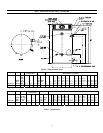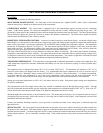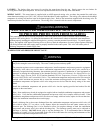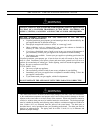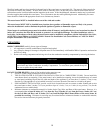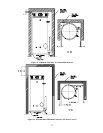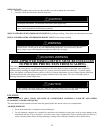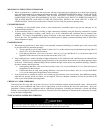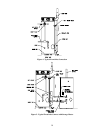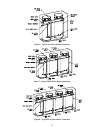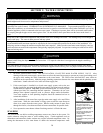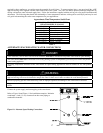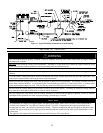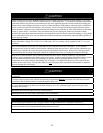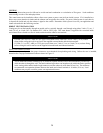
13
MECHANICAL EXHAUSTING OF ROOM AIR
1. Where an exhaust fan is installed in the same room with this water heater and combustion air is drawn from inside the
room, sufficient openings for air must be provided in the walls. UNDERSIZED OPENINGS WILL CAUSE AIR TO BE
DRAWN INTO THE ROOM THROUGH THE WATER HEATER’S VENTING SYSTEM, CAUSING POOR
COMBUSTION THAT MAY BE HAZARDOUS TO LIFE. SOOTING MAY RESULT IN SERIOUS DAMAGE TO
THE WATER HEATER AND RISK OF FIRE OR EXPLOSION, WHICH CAN ALSO CREATE A RISK OF
ASPHYXIATION. Refer to local codes and /or National Fuel Gas Code for proper air opening sizing.
UNCONFINED SPACE
1. In buildings of conventional frame, brick or stone construction, unconfined spaces may provide adequate air for
combustion and ventilation.
2. If the unconfined space is within a building of tight construction (buildings using the following construction: weather
stripping, heavy insulation, caulking, vapor barrier, etc.), air for combustion and ventilation must be obtained from
outdoors. This may be accomplished by piping air directly to the water heater from outside or providing opening or
ducts in the wall. The installation instructions for confined spaces in tightly constructed buildings must be followed to
ensure adequate air supply.
CONFINED SPACE
1. When drawing combustion air from inside a conventionally constructed building to a confined space, such a space shall
be provided with two permanent openings.
• The top opening is to be located within 12 inches (30.5 cm) of the enclosure top and the bottom opening within 12
inches (30.5 cm) of the enclosure bottom.
• Each opening shall have a free area of at least 1 inch² (6.5 cm²) per 1000 Btu/h (.3 kw) of the total input of all
appliances in the enclosure, but not less than 100 inches² (645.2 cm²).
2. If the confined space is within a building of tight construction, air for combustion and ventilation must be obtained from
outdoors. This may be accomplished by piping air directly to the water heater from outside or providing opening or ducts
in the wall. When directly communicating with the outdoors through vertical ducts, two permanent openings, located in
the above manner, shall be provided.
• Each opening shall have a free area of not less than 1 inch² (6.5 cm²) per 4000 Btu/h (1.2 kw) of the total input of
all appliances in the enclosure.
• If horizontal ducts are used, each opening shall have a free area of not less than 1 inch² (6.5 cm²) per 2000 Btu/h
(.6 kw) of the total input of all appliances in the enclosure.
3. If the water heater is installed as a direct vent (outside air piped directly to the water heater), then additional opening,
other than the opening for the air intake, are not required. However, adequate ventilation air must be provided in all
cases to prevent increased room temperature.
CHEMICAL VAPOR CORROSION
Corrosion of the flue ways and vent system will occur if air for combustion contains certain chemical vapors. Such corrosion
may result in poor combustion and create a risk of asphyxiation, as well as reducing the life of the water heater. Spray can
propellants, cleaning solvents, refrigerator and air conditioning refrigerants, swimming pool chemicals, calcium and sodium
chloride, waxes and process chemicals are corrosive. Products of this sort should not be stored near the water heater or outside
by the air intake (if applicable).
TYPICAL INSTALLATION ILLUSTRATION
CAUTION
If the building cold water supply has a back-flow preventer, check valve, or water meter with check valve,
provisions for thermal expansion of water in the hot water system must be provided.



